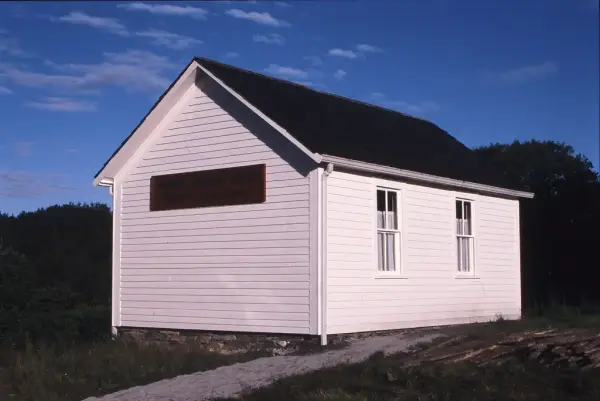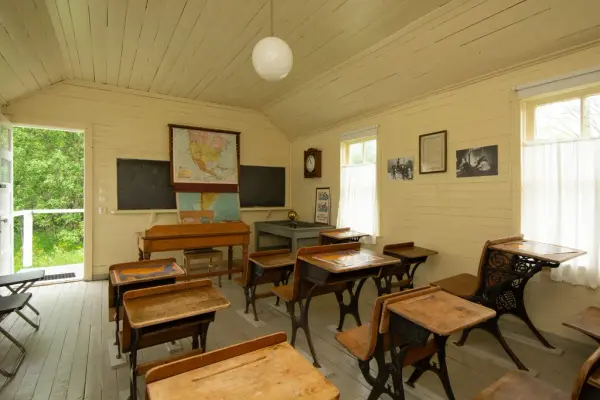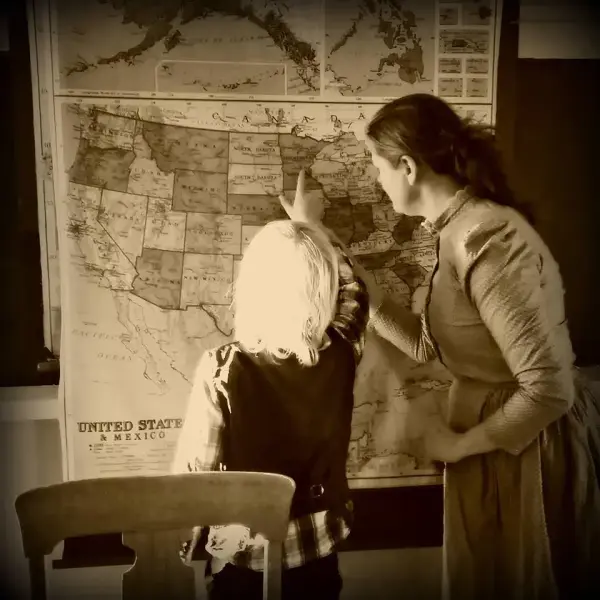-
Picture taken short time after the house came to Sletta
The school house was built in 1893 near the border of South Dakota and not many miles from the border of Minnesota. In this area the settlers found what they were looking for. The soil could be used as soon as the turf was turned, and was more than good enough for farming. During this period, the state of North Dakota grew from a few thousand inhabitants to around half a million, and every fourth settler were Norwegian. They either came directly from Norway, or were traveling between one state to another in the Midwest.
But it was fundamental that the schools were American, not Norwegian or Norwegian-American. In the classroom hung the picture of the first president of the United States and the American flag was up throughout the school day. The curriculum was American. The students were to learn the basic American values and together build a new and better future in America.
-
Inside the school house
The tiny schoolhouse served for many years. After the building were replaced with a more modern building in the mid-1950s, the schoolhouse and its furnishings were bought by the local farmers' association. They moved the house to Forman, the administrative center of Sargent County, where it was used as a museum. In 1997, the Sargent County Farm Bureau gave the school house as a gift to the Emigrant centre, and it was opened at Sletta in 2000.
In the 19th and early 20th centuries, most American children went to such one-room schoolhouses. They had one teacher who taught all children from first to eighth grade. It was common to have anything between a handful of pupils to over forty children in the same classroom, and the age range could be from 5 to 18 years. The youngest sat at the front and the oldest at the back, with the teacher in the middle. It was not unusual for the children to be divided so that the girls sat on one side and the boys on the other. The curriculum focused on the basics of reading, writing, mathematics and history
Especially in areas with widespread farming, it was not unusual for the pupils to only be able to participate in the lessons in the winter, because in the spring and autumn they had to contribute to the farming at home. The school year was therefore adapted to local agriculture so that as many as possible could participate.
One-room schoolhouses are still found in rural areas, and in 2001 there were around 250 such schools in the USA, of which over 70 were located in Montana.
- 1/1


